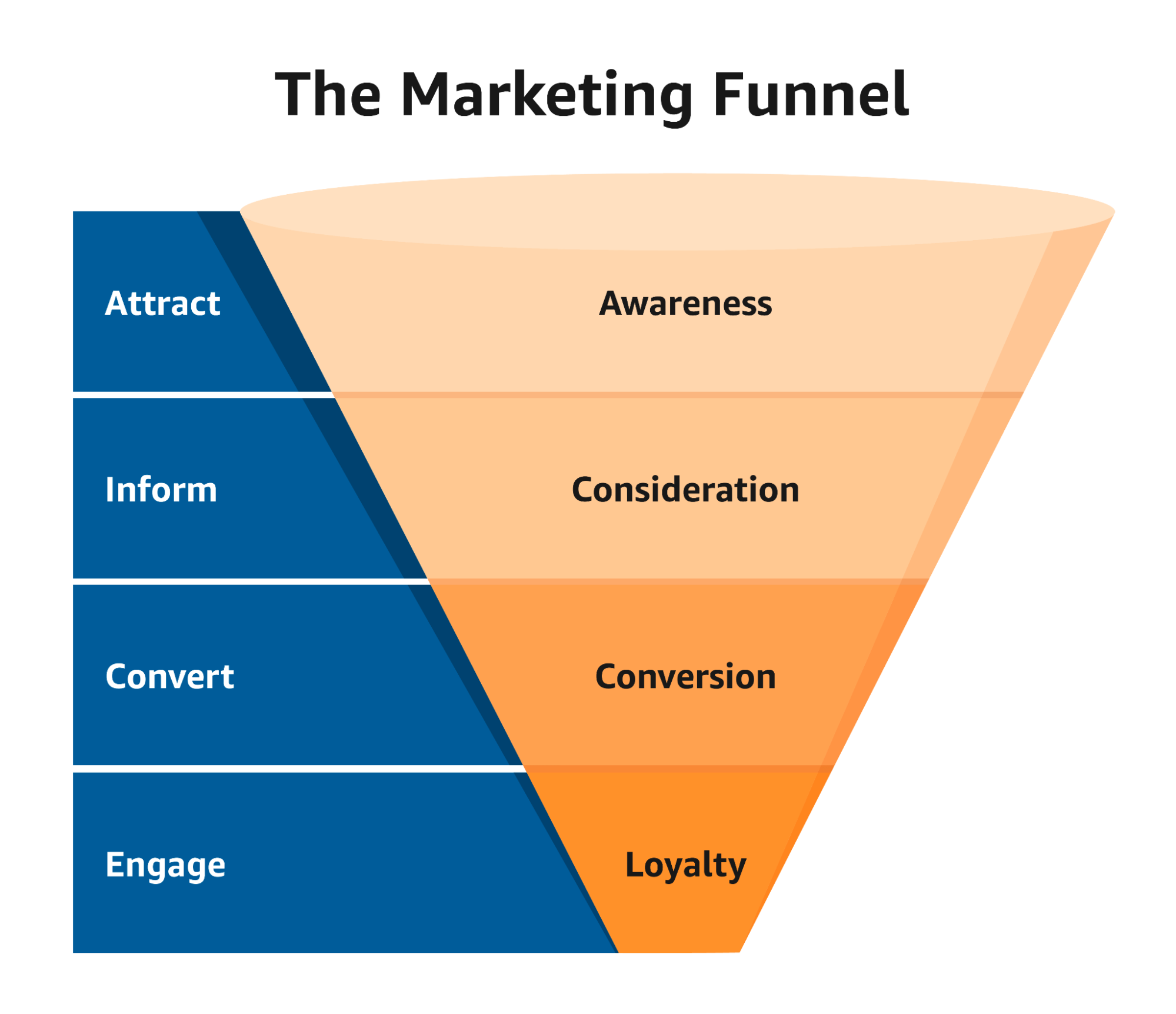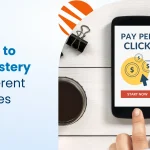In the rapidly evolving digital landscape, businesses that thrive aren’t just focusing on one channel or tactic they’re thinking holistically. A full-funnel digital marketing strategy is key to nurturing customers at every stage of their journey, from first touch to final conversion and beyond.
Yet many brands struggle to align their digital channels effectively. PPC, SEO, email marketing, and social media are often siloed, resulting in disjointed messaging, inconsistent targeting, and missed opportunities.
In this article, we’ll break down how to create a seamless, full-funnel marketing strategy that unifies your channels, increases ROI, and builds long-term customer relationships.
What Is a Full-Funnel Digital Marketing Strategy?
A full-funnel marketing strategy maps your marketing efforts to the three key stages of the customer journey:
-
Top of Funnel (TOFU) – Awareness
-
Middle of Funnel (MOFU) – Consideration
-
Bottom of Funnel (BOFU) – Conversion & Retention
Each stage requires different messaging, targeting, and channel strategies. When aligned correctly, these touchpoints form a cohesive journey that guides your audience from discovery to loyalty.
Why Aligning Channels Matters
Integrating PPC, SEO, social media, and email marketing delivers:
-
Consistent messaging across platforms
-
Higher engagement through tailored content
-
Improved conversion rates by reducing friction
-
Better data tracking across touchpoints
-
Smarter retargeting using multi-channel insights
Without alignment, campaigns operate in silos, wasting budget and confusing potential customers.
Stage 1: Top of Funnel (Awareness)
Objective: Capture attention and generate interest.
At this stage, users don’t know your brand or what you offer. Your job is to educate, entertain, and create brand awareness without selling too hard.
Key Channels at TOFU:
SEO
-
Blog content & informational pages targeting broad search queries (e.g., “how to improve office WiFi”)
-
Featured snippets & People Also Ask optimizations
-
Use of long-tail keywords to rank for relevant, low-competition terms
-
Focus on high-volume, low-intent topics
Example:
A telecoms company could publish an article titled: “Top 10 Home Networking Mistakes (And How to Avoid Them).”
Social Media (Organic & Paid)
-
Brand storytelling and behind-the-scenes content
-
Engaging visuals, polls, and reels to drive interaction
-
Paid awareness campaigns (e.g., boosted posts, brand video ads) targeting cold audiences based on interests or lookalikes
Best Practices:
-
Maintain a consistent posting schedule
-
Use platform-native features (Reels, Stories, TikTok trends)
-
Encourage shares and saves to boost reach
PPC (Google Display & YouTube)
-
Display ads to build awareness among specific demographics
-
YouTube pre-roll or in-stream ads for visual storytelling
-
Broad keyword targeting via Google Discovery or broad match search campaigns
Pro Tip:
Use CPM or vCPM bidding to maximise impressions and reach, rather than conversions.
Stage 2: Middle of Funnel (Consideration)
Objective: Nurture leads and build trust.
Now your audience knows you but they’re still weighing options. This stage is all about value-driven content, social proof, and nurturing.
Key Channels at MOFU:
Email Marketing (Lead Nurturing)
-
Welcome sequences for new subscribers
-
Educational drip campaigns and how-to content
-
Free resources: eBooks, case studies, webinars
-
Product/service highlights with soft CTAs
Pro Tip:
Use behaviour-based triggers (e.g., downloads, abandoned carts) to personalise the experience.
SEO (Transactional & Informational Queries)
-
Comparison guides (“X vs Y”), buying guides, FAQs
-
Product or service landing pages optimised for mid-intent keywords
-
Case studies and customer testimonials
Example:
“Best Ethernet Cables for Office Networks – 2025 Buyer’s Guide”
PPC (Search & Remarketing)
-
Search Ads targeting high-intent queries (e.g., “buy office routers online”)
-
Remarketing ads based on site visits, video views, or lead magnet downloads
-
Dynamic Search Ads to cover keyword gaps
Pro Tip:
Customise ad copy to mirror the funnel stage focus on benefits and trust builders, not just features.
Social Media (Paid Retargeting & Engagement)
-
Retarget website visitors or video viewers with MOFU content
-
Share user-generated content or case studies to build credibility
-
Offer time-limited promotions or free trials
Use formats like:
-
Instagram Story ads with polls
-
LinkedIn Carousel ads showing product features or results
-
Facebook Lead Ads for downloadable guides
Stage 3: Bottom of Funnel (Conversion & Retention)
Objective: Drive action sales, signups, or inquiries.
Here, prospects are primed to convert. Focus shifts to trust signals, urgency, and clear CTAs.
Key Channels at BOFU:
PPC (High-Intent Keywords & Conversion-Focused Ads)
-
Branded and competitor keyword targeting
-
Product or service ads with compelling offers
-
Remarketing with customer testimonials or reviews
-
Use of call-only ads, price extensions, and sitelinks
Pro Tip:
Use conversion-optimised landing pages with minimal distractions.
Email (Conversion & Post-Purchase Sequences)
-
Abandoned cart emails with incentives
-
Final call for limited-time offers
-
Upsell/cross-sell sequences
-
Post-purchase thank-you emails with referral offers
Retention Tip:
Introduce loyalty or reward programs via email to encourage repeat purchases.
SEO (Branded & Local Search)
-
Optimise Google Business Profile and local listings
-
Create dedicated pages for services, pricing, and testimonials
-
Target branded keywords and near-me searches
Example:
“Comms Express Ethernet Cable Reviews” or “Network installers near me”
Social Media (Conversion-Focused Ads)
-
Carousel ads showing product features
-
“Shop Now” or “Book Now” CTAs
-
Customer reviews or UGC with purchase links
-
Time-sensitive offers with urgency (e.g., “Only 3 Left”)
Measuring Success Across the Funnel
To align your efforts effectively, you need to track performance by funnel stage:
| Funnel Stage | Key Metrics |
|---|---|
| TOFU | Impressions, reach, traffic, engagement, video views |
| MOFU | Leads, email signups, bounce rate, session duration |
| BOFU | Conversions, sales, CPA, ROAS, cart abandonment |
Use tools like:
-
Google Analytics 4 (GA4)
-
Meta Ads Manager
-
Google Ads
- Microsoft Ads
-
CRM & Email Platforms (e.g., HubSpot, Klaviyo, Mailchimp)
Tips for Cross-Channel Alignment
-
Unify Messaging:
Keep your value proposition, tone of voice, and brand visuals consistent across all platforms. -
Share Data Between Teams:
Let SEO, PPC, email, and social teams collaborate and share insights to identify what’s working. -
Use Retargeting Loops:
Retarget social viewers with email opt-ins. Retarget email openers with PPC. Keep the journey going. -
Plan Campaigns Holistically:
When launching a campaign (e.g., new product), map content and ads for each funnel stage. -
Automate Where Possible:
Use automation tools to trigger personalised messages based on behaviour, like cart abandonment or page visits.
Real-World Example: How This Looks in Action
Let’s say you’re launching a new line of high-speed office routers.
-
TOFU:
-
SEO blog post: “Why Your Office Wi-Fi Is Slowing Down”
-
Facebook ad: Brand intro video with broad targeting
-
YouTube ad: Product teaser to tech professionals
-
-
MOFU:
-
PPC: Search ads for “best office routers 2025”
-
LinkedIn ad: Carousel showing router features
-
Email: “Office Router Buyer’s Guide” download
-
-
BOFU:
-
Google Ads: Branded keywords + coupon offer
-
Email: Abandoned cart with 10% off
-
Instagram Story Ad: Flash sale countdown
-
This cohesive approach nurtures prospects from awareness to purchase and makes the most of every channel.
Final Thoughts
Today’s customer journey is non-linear, multi-device, and multi-channel. Brands that succeed in digital marketing are those that align their efforts across the full funnel, using the unique strengths of each platform, PPC for instant visibility, SEO for sustainable growth, email for personalisation, and social for connection.
A truly integrated marketing strategy isn’t about doing more, it’s about doing it smarter.


